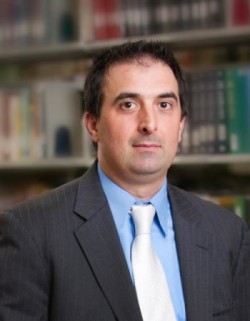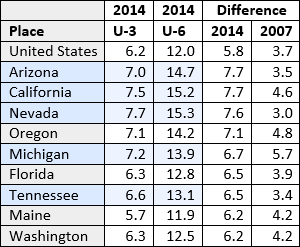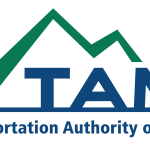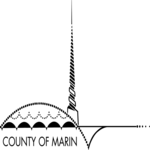Unemployment & Workforce Development and Marin

The unemployment rate is one of the most deceptive and oft-used economic data points in the world. Conceptually, the unemployment rate measures the percentage of residents in a certain area’s labor force that are looking for a job but have not found one yet. The labor force definition is the sum of an area’s employed and unemployed residents. Two immediate issues jump out for economists. First, we know there are people who are “marginally attached” or discouraged workers, or those who are unemployed but unlikely to remain in their job search for much longer or are done looking (discouraged workers); second are those that are working under their economic potential (underemployed), another difficult thing to measure in terms of filling a productivity gap, which could create more jobs if filled. The recent recession and recovery put a large focus on labor market measures, and are at the heart of two macroeconomic issues: slow inflation rates and why the Federal Reserve has not changed interest rates directly since January 2009.
An issue that is more regional is estimating the number of people who could use workforce development assistance. The Bureau of Labor Statistics looks at a variety of unemployment rates to describe the local labor market situation more completely. The definitions of the unemployment rate categories are on this website, and range from U-1 to U-6. It is U-3 and U-6 that are the most important. The national U-3 rate and the county-level analog are reported in the media as “official” rates. The U-6 is the most complete measurement that economists have agreed upon (and is thus the highest rate published) to describe the entire unemployment situation.
We know some people are still not being counted, but the gap is intriguing. In the table below, notice that the gap between the U-3 and U-6 rates is larger in 2014 than in 2007, where 2007 represents the peak of the previous economic expansion. This suggests that the recent expansion has reduced unemployment rates for areas generally, but has widened the gap of those who are marginally attached to the labor force.
Table 1: Unemployment Rates, Dec 2014
Source: http://www.bls.gov/lau/stalt.htm
This gap is a workforce development challenge. In a labor market where jobs are growing and unemployment is falling, we forget that there may be many people who are still receiving unemployment benefits and may be having a hard time finding a job that suits them. The extensions of jobless benefits help explain part of this gap for sure. As those folks come off the insurance payments, they will want to find work. We also know that there are people out there who will take any job if offered that are currently not working. We also know people who would rather wait than take a job that is “beneath” them. For a lot of people, it is really about re-tooling and revitalizing their skills, the need for workforce development. As a relatively educated place, Marin County has specific challenges and also a lot (over 36,000) of small businesses where workforce development becomes entrepreneurial support instead.
The College of Marin, Dominican University of California, Sonoma State University, Santa Rosa Junior College, and the Marin Employment Connection all are partners in workforce development efforts. These institutions are for specific audiences, but are all in a team to help reduce the local difference between the U-6 and U-3 unemployment rates, and also lower the U-3 rate. This is a critical, continuous need in a labor market that is facing an aging population and difficulty in retaining workers between the ages of 18 and 40. This means the costs of doing business in Marin have nowhere to go but up; workforce development provides supply-side support for Marin County businesses.















